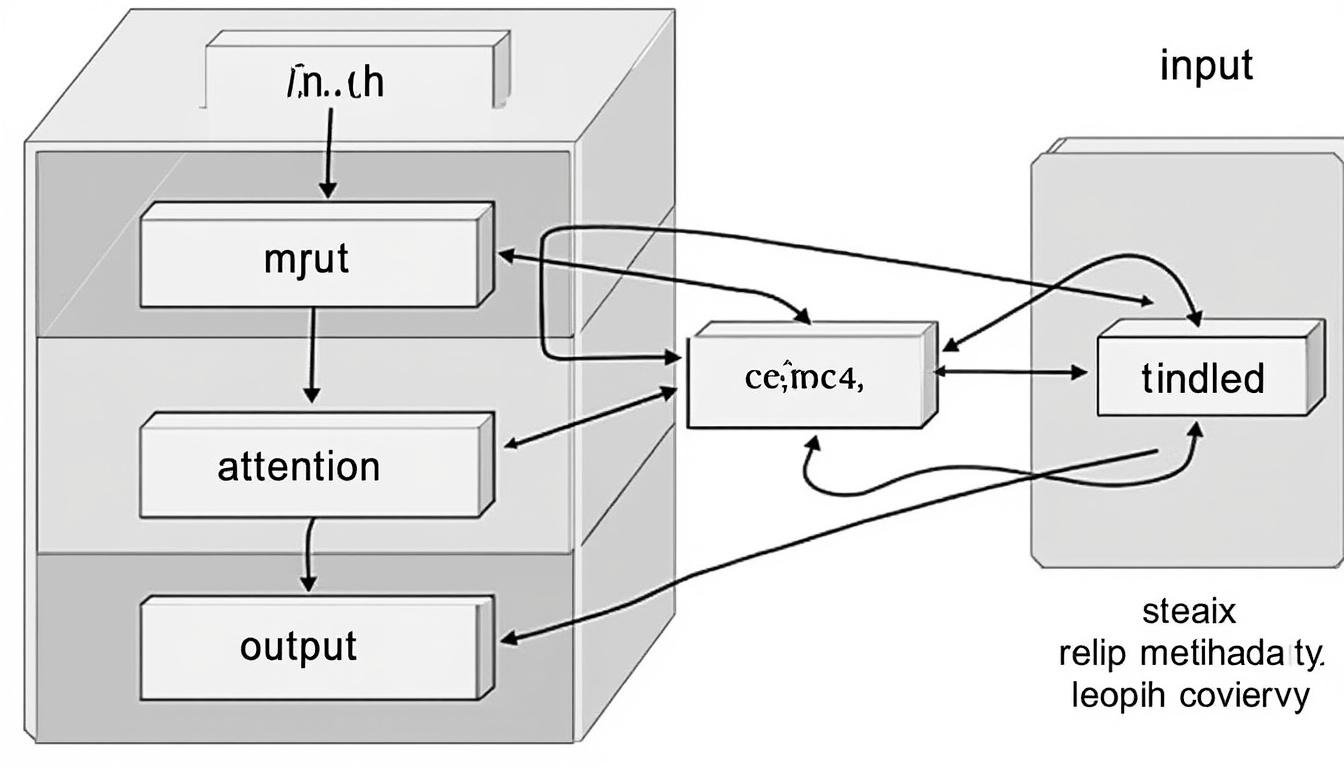En bref
- The GPT family has redefined AI language models by scaling data, parameters, and training techniques, unlocking unprecedented capabilities in text generation, translation, and reasoning.
- Foundational architecture relies on transformer blocks and self-attention, paired with unsupervised pre-training and task-specific fine-tuning, often enhanced by instruction tuning and RLHF.
- As of 2025, a vibrant ecosystem includes OpenAI, Google AI, Microsoft Research, DeepMind, Anthropic, Meta AI, Cohere, Stability AI, Hugging Face, and AI21 Labs.
- Applications span chatbots, coding assistants, translation, summarization, and content creation. This growth raises important questions about safety, data governance, and societal impact.
- For deeper reading, explore resources such as Generative Pre-trained Transformer, Semi-supervised learning and labeled-vs-unlabeled data, Google innovations in the digital age, AI insights and innovations, and latest AI innovations hub.
The evolution of Generative Pre-trained Transformers has been shaped by a confluence of breakthroughs in scale, data access, and learning strategies. From the early GPT-1 era to today’s increasingly capable models, the trajectory is marked by a relentless push toward more nuanced understanding, better instruction following, and safer deployment. As ecosystems expand, collaborations across industry and academia—ranging from OpenAI to Google AI, Microsoft Research, and DeepMind—continue to redefine what is possible in natural language understanding. In 2025, researchers are balancing raw capability with alignment, efficiency, and governance, ensuring that language models support humans in transparent and principled ways.
Evolution of Generative Pre-trained Transformers: From GPT-1 to 2025 and Beyond
Generative Pre-trained Transformers emerged from the idea of pre-training a large neural network on vast text corpora and then adapting it to downstream tasks with minimal task-specific data. This approach unlocked dramatic improvements in language generation, comprehension, and zero-shot reasoning. The journey began with GPT-1, progressed through GPT-2 and GPT-3, and culminated in GPT-4 and related iterations that broadened multimodal capabilities and safety features. As of 2025, the ecosystem includes increasingly diverse variants, some prioritizing efficiency and others emphasizing safety, multi-task learning, or domain specialization.
- GPT-1 established the feasibility of large-scale pre-training for language tasks.
- GPT-2 demonstrated dramatic leap in text quality and the emergence of coherent long-form generation.
- GPT-3 popularized very large models with few-shot and zero-shot capabilities across many tasks.
- GPT-4 and successors expanded multi-modal inputs and refined alignment mechanisms, enabling safer and more controllable outputs.
- Industry collaboration and ecosystem tooling accelerated adoption across sectors, from content tooling to software development.
| Model | Year | Parameters (approx.) | Key Feature |
|---|---|---|---|
| GPT-1 | 2018 | 117M | Foundational pre-training on text corpora |
| GPT-2 | 2019 | ~1.5B | Coherent long-form generation |
| GPT-3 | 2020 | 175B | Few-shot and zero-shot capabilities |
| GPT-4 / successors | 2023–2025 | Multi-modal, higher safety | Improved alignment, instruction following |
The video above charts the trajectory of OpenAI‘s GPT lineage, illustrating how scaling laws and attention mechanisms enable richer language understanding. For a broader business and research context, see analyses from AI insights and innovations and industry benchmarks from Google innovations in the digital age.
Architectural Innovations and Training Paradigms
Core GPT architectures pivot on transformer blocks and self-attention, enabling models to weigh different parts of the input dynamically. The training pipeline begins with large-scale unsupervised pre-training on text from diverse sources, followed by supervised or reinforcement-based fine-tuning for specific tasks. Instruction tuning and reinforcement learning from human feedback (RLHF) have become pivotal in shaping task behavior, safety, and alignment with human expectations. The emphasis has also shifted toward efficiency, model compression, and accessibility through open tooling and community-led ecosystems.
- Pre-training learns broad language patterns; fine-tuning specializes behavior for tasks like translation or Q&A.
- Instruction tuning guides models to follow human-provided prompts more reliably.
- RLHF aligns outputs with user intent and safety criteria through iterative feedback loops.
- Emerging trends include mixture-of-experts, sparse architectures, and multi-modal integrations.
- Industrial collaborations span academia and industry, fostering robust evaluation and governance frameworks.
| Aspect | Description | Impact |
|---|---|---|
| Transformer cores | Self-attention + feed-forward blocks | Scales with data and compute to improve context handling |
| Pre-training objective | Predict missing/next words in large corpora | Foundations for broad language capabilities |
| Fine-tuning strategy | Task-specific adaptation with minimal data | Improved performance on niche tasks |
| Alignment techniques | RLHF, safety constraints, and policy controls | Reduces harmful outputs and improves reliability |
As part of the learning journey, researchers examine the implications of data diversity and scale. See discussions on Google AI and Microsoft Research contributions to large-scale learning systems, and how Hugging Face and Cohere democratize access to advanced models. For architectural deep-dives, consult neural networks as the key to AI and recurrent networks.
From Pre-training to Instruction Tuning: How GPTs Learn
- Unsupervised discovery of language structure in vast text corpora.
- Generalization to unseen tasks via few-shot learning and prompts.
- Instruction following improved by curated data and human feedback.
- Safety and governance shaping model deployment at scale.
To explore the broader AI ecosystem, consider AI insights and innovations and articles on semi-supervised learning.

Applications, Impacts, and Industry Adoption
GPT models have become central to enterprise and consumer software, powering chat platforms, coding assistants, translation services, and advanced data analysis. The business impact includes faster content generation, improved customer support, and more capable automation tools. Industry ecosystems are growing around OpenAI APIs, while research labs from DeepMind and Anthropic push improvements in safety and interpretability. The breadth of use underscores the need for responsible deployment and close collaboration with regulators, users, and developers alike.
- Chatbots and virtual assistants enhance user experience across sectors.
- Code generation and debugging tools accelerate software development cycles.
- Automated summarization and translation support informed decision-making.
- Content generation for marketing, education, and media industries.
- Research assistants and data analysts leverage GPTs for hypothesis generation and pattern discovery.
| Application | Benefit | Key Players / Ecosystem |
|---|---|---|
| Customer support | Faster response, 24/7 availability | OpenAI, Google AI, Microsoft |
| Code and software tooling | Fewer bugs, accelerated development | GitHub Copilot lineage, Hugging Face repos |
| Content creation | Scalable drafting and editing | Meta AI, Cohere, Stability AI |
| Education and tutoring | Personalized learning paths | AI21 Labs, Anthropic |
Reading lists and deeper explorations include latest AI innovations hub and semi-supervised learning bridging the data gap. Industry case studies highlight success stories across healthcare, finance, and education, with DeepMind and Meta AI leading in multi-modal capabilities and safety research.
Challenges, Risks, and the Path Forward
Despite remarkable progress, GPTs raise important questions about safety, bias, privacy, and governance. Unchecked generation may propagate misinformation, while data usage rights and consent remain critical concerns for organizations deploying these systems. Researchers at Google AI, OpenAI, and Microsoft Research emphasize transparent evaluation, robust red-teaming, and user controls to mitigate harm. Equitable access and environmental considerations also shape policy and business strategy as compute demands continue to grow.
- Alignment and safety: reducing harmful outputs and avoiding manipulation.
- Bias and fairness: ensuring diverse data leads to fair results.
- Privacy: safeguarding training data and user interactions.
- Compute and energy use: balancing capability with sustainability.
- Governance: clear policies for accountability and transparency.
| Risk Area | Challenge | Mitigation |
|---|---|---|
| Alignment | Outputs misaligned with user intent | RLHF, safety constraints, human oversight |
| Bias | Systemic fairness concerns | Careful dataset curation and auditing |
| Privacy | Training data leakage risk | Data handling policies and on-device options |
| Compute | Rising energy and hardware costs | Efficient architecture and distillation |
For a broader business and policy context, explore neural networks and AI foundations and processing technologies for AI efficiency.
What exactly is a Generative Pre-trained Transformer (GPT)?
GPTs are large-scale language models built on transformer architectures. They are pre-trained on enormous text corpora to learn language patterns, then adapted to specific tasks via fine-tuning and instruction-following techniques such as RLHF to improve usefulness and safety.
What is RLHF and why is it important for GPTs?
Reinforcement Learning from Human Feedback (RLHF) uses human judgments to steer model outputs toward desired, safer, and more helpful behaviors. It plays a central role in aligning GPTs with user intent and societal norms.
Which organizations are leading in GPT research and deployment?
Key players include OpenAI, Google AI, Microsoft Research, DeepMind, Anthropic, Meta AI, Cohere, Stability AI, Hugging Face, and AI21 Labs, among others.
What are the main applications of GPTs in 2025?
GPTs power chatbots, coding assistants, translation, summarization, and content generation, with growing use in research, education, and enterprise automation. Safety, governance, and ethics remain ongoing considerations.




